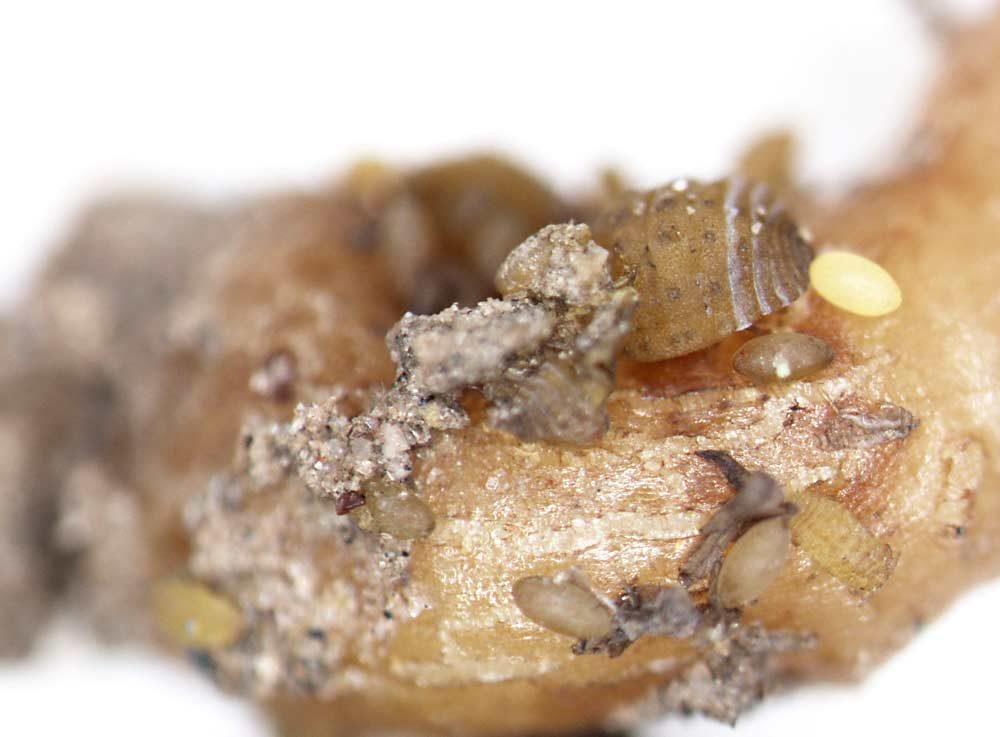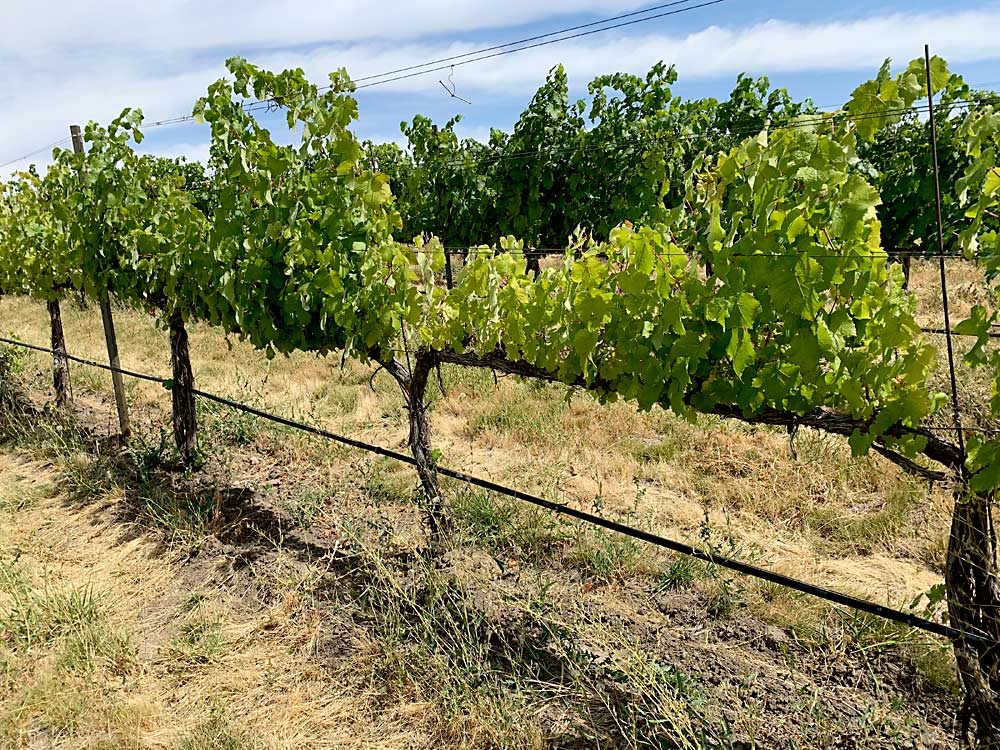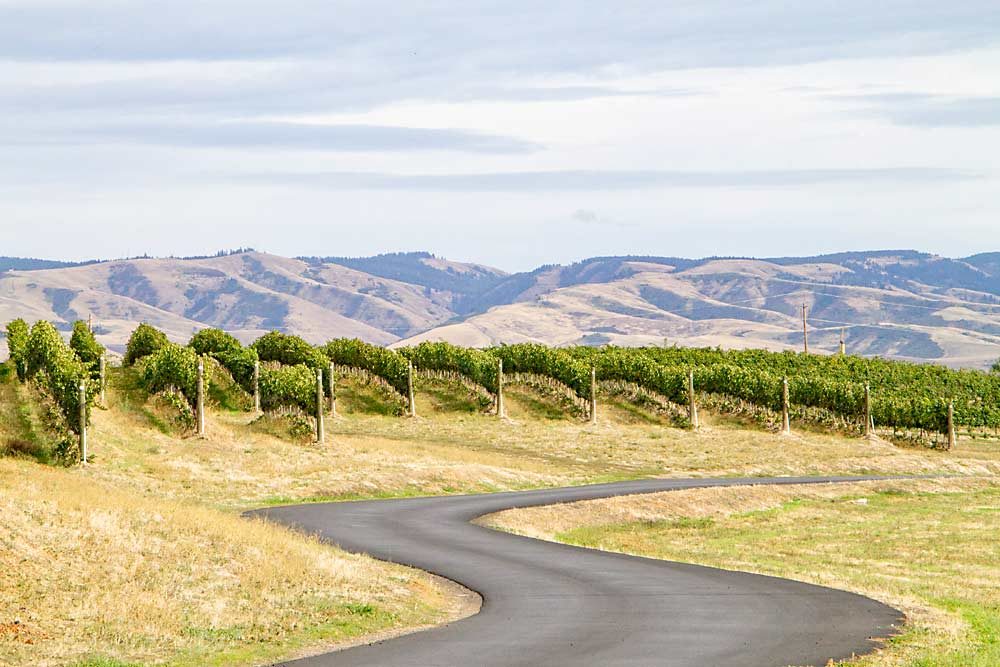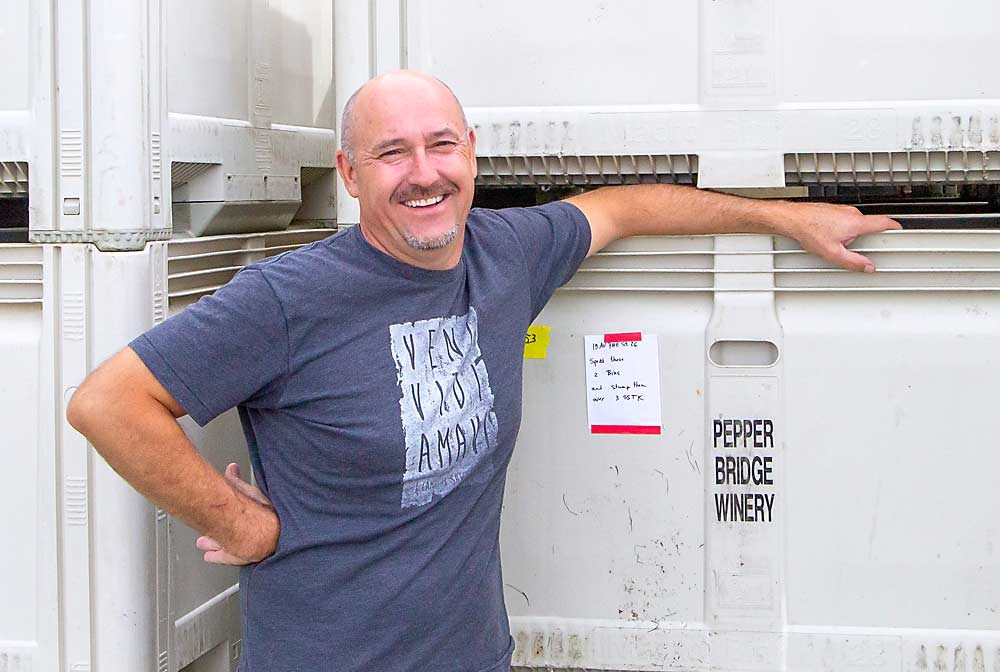
When it comes to a pest problem, it’s better to know than not.
That’s the upside for the wine grape growers in Washington’s Walla Walla Valley, who made the unwelcomed discovery this fall of phylloxera lurking in their vine roots. While the news made headlines in the wine media, many researchers and industry leaders say it’s just another pest.
“We’ll manage for it like many other pests and diseases we manage for,” said Vicky Scharlau, executive director of Washington Winegrowers. It’s not good news, but it’s not a crisis: Phylloxera-driven decline takes years, and in the meantime, it has no impact on fruit quality.
“Finding it doesn’t mean it’s new, it just means you found it,” said Michelle Moyer, extension viticulturist for Washington State University. She applauded growers for looking for the quarantine pest: Some now know why they were struggling with decline in certain areas and others know what to keep an eye out for.
“You can’t manage what you don’t know,” she said.

Phylloxera feeds on vine roots, reducing productivity over time and eventually killing own-rooted vines. It’s been found in Washington for the past 100 years, but very sporadically and usually in Concord vineyards where it’s not an economic pest.
Most wine regions around the world manage it by planting vines grafted onto resistant rootstocks, but in Washington the absence of phylloxera pressure meant almost all of the vineyards grow on their own roots. Very sandy soils may protect many of them, but in less sandy areas, vineyards are vulnerable to phylloxera.
The state’s wine industry responded to the new detections by urging growers to use best practices during harvest to prevent the spread of phylloxera, which can move in soil and on boots, equipment and vehicles.
It’s likely been present in the Walla Walla region for years, if not decades, Moyer said, so the new detections don’t mean it was recently introduced to the area. “And it’s likely elsewhere, too, it’s just that people in Walla Walla looked first,” she said.
Looking for phylloxera
Moyer urged growers throughout the state to take a look at their roots in underperforming or low-vigor areas of their vineyards. These may be visible as elongated ovals along vine rows in NDVI images, she said.
Dig up some actively growing roots in the first foot or so of soil to look for the phylloxera and the galls that form on root tips in response to their feeding. A simple hand lens will be sufficient to see the yellowish aphid-like insects.
Although it is a quarantine pest, all samples taken so far have been voluntary.

The Washington State Department of Agriculture conducted a small sampling effort in major wine regions this fall, but a large-scale survey to determine where phylloxera has established and where it hasn’t would require additional industry funds, said Cindy Cooper, plant services program manager for WSDA.
“I’m hopeful that we can find out where it is, and we and WSU can help those vineyards establish best management practices,” she said. “This is industry-driven. These quarantines are in place to protect the industry.”
As the industry gathers this winter to determine a response plan, Scharlau hopes to build support and find funding for a more thorough survey.
“We need to do a comprehensive, extensive survey of the state of Washington in 2020, and we need industry buy-in,” she said.
Growers don’t need to fear the quarantine regulations, which are designed to protect them, Scharlau said. When a quarantine pest is found, the WSDA will require the landowner or vineyardist to apply best management practices, as recommended by WSU, Cooper said.
“The industry is a little afraid of our regulatory abilities, but we don’t have the personnel to go out and look in everyone’s vineyards for the pest,” she said. “We’re not going to go and fine everyone who has phylloxera thousands of dollars.”
WSU also hopes to make a soil map to help Washington wine grape growers assess their phylloxera risk, said viticulture professor Markus Keller. The sandier a soil, the less likely phylloxera is to thrive, he said, but it’s not true that most of the state’s soils are inhospitable to the pest.
“Yes, we have a lot of sandy soils, that is going to help us out,” he said. “Anything with like a Quincy soil, we don’t have to worry about phylloxera there, but as soon as you have any clay, you have (phylloxera) risk.”
Management
In the wine world, phylloxera has better name recognition than most of the pests and pathogens growers regularly contend with, thanks to the well-known story of how it nearly decimated European vineyards after its introduction from Eastern North America in the 1860s.
Several wild North American grapes resist the pest or grow fine despite it, and those species provide the genetic foundation for the resistant rootstocks that have been used to manage phylloxera for more than a century.
As phylloxera made its way to the world’s major wine regions, growers have replanted on rootstocks. That’s likely to be the long-term solution for Washington, too. (See: Rootstocks a new reality for Pacific Northwest vineyards.)

“The only downside to that is the cost,” said Jean-François Pellet, the winemaker at Pepper Bridge Winery in Walla Walla. He’s a third-generation wine grape grower from Switzerland, where rootstocks are the norm. There’s a lot to learn about how best to use them in Washington, but the industry has time to learn, he said.
“I don’t know how long those vines are going to take to decline, but they are not going to die overnight,” he said. This year’s harvest was looking very good, he said when Good Fruit Grower visited in September.
Since the first detections were reported right before harvest, the first response priority became limiting the unwitting spread of the pest by workers and equipment. Cleaning soil from bins, vehicles and workers’ shoes is critical, according to a list of best practices shared by the Washington Winegrowers and Washington State Wine Commission.
Many of the best practices are drawn from Australia, which has strict quarantines to prevent phylloxera spread. Although the pest has forced some regions to replant on resistant rootstocks, between the quarantine and the sandy soils, many regions have remained own-rooted and unscathed.
In the short term, growers can try fighting the decline due to phylloxera with additional irrigation and nitrogen to boost vigor, Moyer said.
As for chemical controls, Moyer and WSU Extension educator Gwen Hoheisel, in their newsletter to the industry, recommended against fall pesticide applications. They also advise against pulling infected individual vines because that disturbance can actually increase the rate of spread.
Educational sessions about phylloxera are planned for industry winter meetings. The good news: Plenty of good information exists from other wine regions that have successfully managed phylloxera, Moyer said.
“Phylloxera has been in every wine region in the world, so why would it not come to Washington?” Pellet said. “It’s part of the evolution of our industry.” •
—by Kate Prengaman
Related:
—Rootstocks a new reality for Pacific Northwest vineyards






Leave A Comment